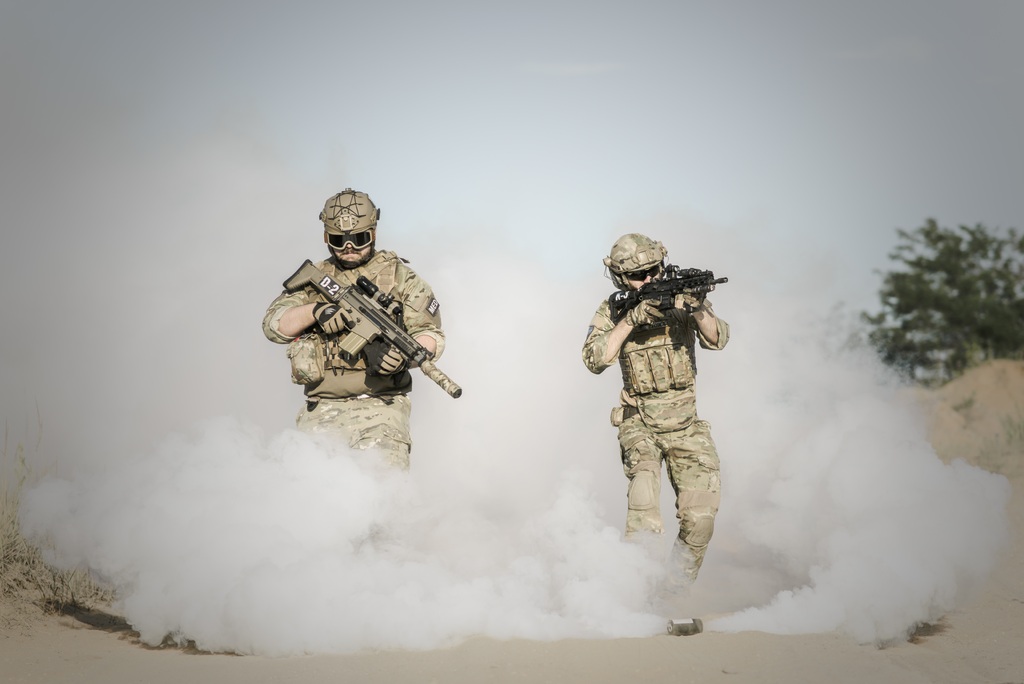A Century-and-a-Half Look at the Waves of Global Terrorism
A review of David C. Rapoport, “Waves of Global Terrorism: From 1879 to the Present” (Columbia University Press, 2022).

Published by The Lawfare Institute
in Cooperation With

A review of David C. Rapoport, “Waves of Global Terrorism: From 1879 to the Present” (Columbia University Press, 2022).
***
As harassed university lecturers scrambled to devise brand new modules on terrorism in the wake of 9/11, a 15-page piece by David Rapoport entitled “The Four Waves of Rebel Terrorism and September 11” appeared as if in answer to their prayers. Rapoport argued forcefully that anti-state (or “rebel”) terrorism tended to occur in great 40-year waves, shaped by a predominant ideological energy: of anarchist (c. 1880-1920), anti-colonialist (c. 1920-1960), New Left (1960 to 1980s), and religious radicalisms (c. 1979 to the present). Here was an account of the evolution of anti-state terrorism whose outline could be easily grasped. No less importantly, it was also an account that seemed to give some indication of the likely shape of future terrorist horrors. Rapoport’s “Four Waves of Rebel Terrorism” became that rarest of phenomena in the social sciences: the instant classic.
As its title suggests, “Waves of Global Terrorism: From 1879 to the Present” returns to the same explanatory territory as Rapoport’s earlier work, but at far greater length—440 pages. The original formulation of the “Four Waves” thesis was written at a time when the religious wave of terrorism was supposedly only half-run. It is to Rapoport’s credit that he has the intellectual courage to return to his model 20 years on to see how it is ticking over. According to his earlier predictions one might—in broad terms—now expect the energy of that religious wave to be strongly ebbing and perhaps some new threat to be looming on the horizon.
Indeed, such questions of prediction generally lurk in the background, although they move into the foreground for the final conclusion of the book. Much of the originality of this volume, and its likely appeal for students of terrorism, lies in this closing discussion of “whether the rise of right-wing terrorism in recent years is the beginning of a global Fifth Wave.” Such an analytical approach that draws upon historical patterns to peer into the future has been successfully pioneered by other renowned terrorism scholars—for instance, Audrey Cronin’s “Power to the People” (uncited by Rapoport).
How convincingly does this approach suggest the future trajectory of extreme-right violence? Wisely perhaps, Rapoport is strikingly tentative in his tone: “[I]f it is linked only to the immigration problem and significant Islamic attacks,” he writes, “it may end soon”; hate crimes predominate over terrorism. Additionally, capacity seems weak to sustain a prolonged wave of terrorism, as Rapoport notes that “most European far-right terrorist groups have only three or four members” and “seventy-two percent do not last longer than a year.” Such features raise doubts on whether this type of violence really stands in the same “rebel terrorism” tradition that Rapoport has claimed has occurred in waves since 1880. Is such violence “revolutionary” in Rapoport’s own terminology? Notably absent from this discussion is any sustained analysis of the impact of the 21st century’s communications revolutions: Can we expect 40-year waves of terrorism to continue occurring in an age of social media’s rampantly short attention spans?
All of this, in turn, tends to cast some doubt back on the original “Four Waves” account, particularly on its treatment of causation. Rapoport claims that each wave had its own precipitating event that propelled it on its way but, at the same time, that “terrorism is deeply rooted in modern culture.” Which is it? If external events can precipitate waves of terrorism—whatever their internal generational dynamics—might they also not undercut them, too? In this regard, one of the weakest passages of the book is Rapoport’s account of the fading of anarchist terrorism due to “the inability of organizations to achieve success, the decision of many anarchists to become syndicalists, and changing police practices.” It seems odd that Rapoport does not mention the Russian Revolution here—a great upheaval that siphoned off so much of the energy and élan of the hard left from anarchism and toward the Bolshevist experiment: the equivalent of the Islamic State Caliphate for those interested in building utopias in the present day. Memoirs of long-term activists such as Victor Serge and Emma Goldman are clear on this point. In so far as “changing police practices” and mass expulsions weakened violent anarchist subcultures, Rapoport is not wrong, but this was the reaction of terrified governments throughout the industrial world to the Russian Revolution. He seems curiously blind to its global significance.
Certainly there is much to enjoy in “Waves of Global Terrorism.” Rapoport’s very long career of studying terrorism through peaks and troughs of public attention makes him a shrewd observer of human inconsistency. He is particularly good on collective amnesia about past terrorism: “[W]hen a wave dissipated,” he writes, “the assumption seemed to be that terrorism would never again be a serious problem.” He ironically quotes a member of the commission investigating the 1993 bombings of the World Trade Center who stated that his office had been abolished “since terrorism was over.” He is sharp-eyed, too, on the temptations of propaganda, noting that the American extreme right enthusiastically claimed the Branch Davidians who were slaughtered at Waco in 1993 to be martyrs, despite the latter’s rejection of the former’s racist values.
In the final analysis, though, “Waves of Global Terrorism” lacks the ruthless concision that allowed “The Four Waves of Rebel Terrorism” to pack its punch. Structurally, its organization is uneven. For instance, an ambitious chapter on “Terrorism Before the Global Form” attempts to survey 2,000 years of terrorism by eclectic spotlighting of individual examples. But it is not entirely clear how this discussion sets up the wider argument about global terrorism occurring in waves. Rapoport ushers in case studies here with only the abruptest of introductions: Ancient Sicarii thus find themselves unexpectedly beside medieval “Assassins” (that is, the Nizaris), Crusaders, the Sons of Liberty (1765-1776), and the Ku Klux Klan. The result is somewhat like an awkward cocktail party. The flow of discussion feels stilted.
At other times, the opposite tendency predominates—context over-dominates and analysis of any actual terrorism recedes. Extended discussions of the Cuban missile crisis and the electoral rise of the far-right in the 21st century are cases in point. Occasionally, Rapoport’s instinct for the arresting claim leads him onto treacherous ground. He writes that, “[w]hen the Assassins fought the Crusaders, they used their armies, not fedayeen”—but this assertion is contradicted by the killings of both Conrad of Montferrat in 1192 and Raymond of Antioch in 1213. Similarly, Rapoport claims that in the First Wave “the assassin always used bombs”—even though none of the five prominent assassinations he listed earlier fit this pattern.
Other factual errors are more minor. The British Prime Minister Gladstone staged many political comebacks—but one in 1896 was too late, even for him. King Alexander of Yugoslavia was assassinated in 1934, not 1933. In 1985, the explosion of Air India Flight 182 took place over the Atlantic, not Canada. The Fenian movement was founded in 1858 and thus was not in origin “an American Civil War product.” Executions after the Easter Rising took place in its immediate aftermath; that is, in 1916, not 1917. “The Irish Free State”—not the “Dominion of Ireland”—was the title of the new polity created under the Anglo-Irish Treaty of 1921. The Irish Republican Army’s Operation Harvest began in 1956, not 1952. At Bloody Sunday in 1972, the Parachute Regiment fatally wounded 14, not 12, people. European readers may also be surprised to learn that the Japanese attacked Pearl Harbor “to initiate World War II.”
A survey work like this necessarily depends primarily on the work of others, rather than primary research in its own right. This makes the decision not to include a bibliography all the more disappointing. Strikingly, a survey of the endnotes shows that Rapoport’s discussion of the Ismailis rests upon very old literature first published in the 1950s and 1960s: The huge scholarly contribution made since then by Farhad Daftary goes unmentioned. Extensive literatures on 19th century Irish terrorism also seem to be only lightly sampled—apparently due to a decision not to treat the transnational Irish-American dynamite bombing campaigns as authentic examples of global terrorism.
David Rapoport’s scholarly contribution to the study of terrorism past remains (deservedly) secure, of course. His provocative sketch of how global terrorism emerged has continued to hold the field since the immediate aftermath of 9/11. And this new volume allows him to present it in fuller, and richer, brush strokes. As the academic study of terrorism continues to mature, many will doubtless find “Waves of Global Terrorism” an immensely illuminating and persuasive study: “The final word on the history of global terrorism from the nineteenth through the twenty-first centuries[,]” in the words of one enthusiastic reviewer quoted on its back cover. Historians, perhaps, may allow themselves to remain a little more ambivalent.



